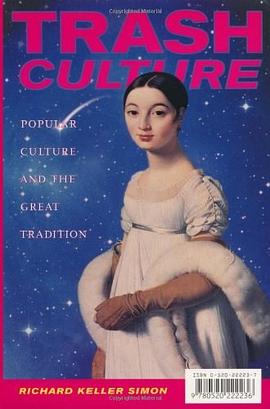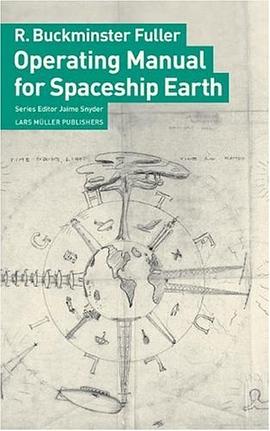

具体描述
Are there "natural laws" that govern the ways in which humans behave and organize themselves, just as there are physical laws that govern the motions of atoms and planets? Unlikely as it may seem, such laws now seem to be emerging from attempts to bring the tools and concepts of physics into the social sciences. These new discoveries are part of an old tradition. In the seventeenth century the philosopher Thomas Hobbes, dismayed by the impending civil war in England, decided that he would work out what kind of government was needed for a stable society. His solution sparked a new way of thinking about human behavior in looking for the "scientific" rules of society. Adam Smith, Immanuel Kant, Auguste Comte, and John Stuart Mill pursued this idea from different political perspectives. But these philosophers lacked the tools that modern physics can now bring to bear on the matter. Philip Ball shows how, by using these tools, we can understand many aspects of mass human behavior. Once we recognize that we do not make most of our decisions in isolation but are affected by what others decide, we can start to discern a surprising and perhaps even disturbing predictability in our laws, institutions, and customs. Lively and compelling, "Critical Mass "is the first book to bring these new ideas together and to show how they fit within the broader historical context of a rational search for better ways to live. Philip Ball majored in chemistry at Oxford University and received a Ph.D. in physics from the University of Bristol. He is now a writer and consulting editor for "Nature." He is the author of "Life's Matrix": " A Biography of Water"; "Bright Earth": " Art and the Invention of Color," which was nominated for a National Book Critics Circle Award; and "The Devil's Doctor." He lives in London, England, with his wife. Winner of the Aventis Prize "Critical Mass" asks the question, Why is society the way it is? How does it emerge from a morass of individual interactions? Are there laws of nature that guide human affairs? Is anything inevitable about the ways humans behave and organize themselves, or do we have complete freedom in creating our societies? In short, just how, in human affairs, does one thing lead to another? In searching for answers, science writer Philip Ball argues that we can enlist help from a seemingly unlikely source: physics. The first person to think this way was the seventeenth-century English philosopher Thomas Hobbes. His approach, described in "Leviathan," was based not on utopian wishful thinking, but rather on Galileo's mechanics; it was an attempt to construct a moral and political theory from scientific first principles. Although his solution--absolute monarchy--is unappealing today, Hobbes sparked a new way of thinking about human behavior in looking for the "scientific" rules of society. Adam Smith, Immanuel Kant, Auguste Comte, and John Stuart Mill pursued this same idea from different political perspectives. Today the purpose of applying concepts from physics to the social, political, and economic sciences is no longer to prescribe how society ought to be; instead, it is to understand the way it is, and how it evolves. In "Critical Mass," Ball looks at what this "physics of society" has to say about how people move in open or enclosed spaces; how they make decisions and cast votes, form allegiances, join groups, establish companies and communities. He examines the behavior of financial markets and reveals the hidden structure in networks of social and business contacts, and he explores the politics of conflict and cooperation from a scientific point of view. If physics can help us explain and understand human interaction and social behavior, can it also be used to anticipate and thereby avoid problems? Can physics be harnessed to improve societies, to guide us toward better decisions, and to make a safer and fairer world? Or is that merely another dream destined for the graveyard of utopias past? "A wide-ranging and dazzlingly informed book about the science of interactions. I can promise you'll be amazed."--Bill Bryson, chair of the 2005 Aventis General Prize Judging Panel "Philip Ball makes physics sexy again in "Critical"" ""Mass.""--Elissa Schappel, "Vanity Fair" "A prolific and accomplished science journalist . . . "Critical Mass" is] lively and wonderfully informative."--George Scialabba, "The ""Boston"" Globe""" "Fascinating . . . impressively clear and breathtaking in scope . . . substantial, impeccably researched . . . persuasive. For anyone who would like to learn about the intellectual ferment at the surprising junction of physics and social science, "Critical Mass" is the place to start."--Stephen Strogatz, "Nature""" ""Critical Mass" is an intellectual roller-coaster."--"The Economist" "A highly provocative work of popular science."--"Kirkus Reviews "(starred review) "In this wide-ranging investigation of pioneering attempts to explain social behavior by applying formulas borrowed from physics, Ball explains how maverick social theorists are now using discoveries about molecular motion and crystal formation to predict the behavior of various human groups, including crowds of soccer fans and clusters of pedestrians. Ball acknowledges that past 'political arithmeticians' have often dehumanized their subjects by adopting mechanistic assumptions about individual psychology and have sometimes legitimated totalitarian rulers by giving them a putatively scientific charter. But Ball's numerous detailed examples of the new social physics show how statistical models from physics can yield highly reliable predictions for large-group outcomes without abridging the unpredictable freedom of individual choice. These same examples teach that a consistent physics of society yields not an ideological straitjacket stipulating how people "should "act but rather a detailed portrait of how people "do "act. Because the new social physics can help managers and p
作者简介
英国著名的科学与科普作家。在牛津大学主修化学专业,在布里斯托尔大学获得物理学博士学位。已出版十部科学与科普书籍,并在世界许多著名的科学杂志上发表文章和评论。目前在著名杂志《科学》任特邀科学编辑,并经常通过媒体和在高等学府举办各种讲座。
目录信息
读后感
这是一本用物理学知识来解释社会学的书,即通过流体力学和概率论等来解释人类群体的行为模式。 一般,我们认为人类行为是不可预知的,其作为群体的行为也是没有规律的。不像物理学一样,只要给定初始条件,结果就是确定的--这就是科学原理。但是,本书就要颠覆我们的这种观点...
评分书中多次提到了华人的名字,科学家、社会学家等。也提到了一些中国的事例。占全球1/5人口的华人在未来的一百年内或许真的会成为类似犹太人族群,当然还有个明确公认的政治实体国家政府。 本书前边的大半部分和自然科学关系更密切些,后半部分和社会科学关系更密切些。这些都暗...
评分 评分古典物理学,也就是经典的牛顿力学,其研究方法是基于一种抽象,一种将复杂的世界简单化,排除和研究对象非关联的因素的影响,只关注研究对象本身的一种方法。这段话有点绕,是不是?俺的表达能力有限,SORRY。 人类社会,比古典物理研究的死东西复杂多了。每个人都不一样。面...
评分《预知社会—群体行为的内在法则》,英文原版名字是:“Critical Mass: How One Thing Leads to Another”,2004年出版的。中文版有两个:《预知社会》出版于2007年,《预知社会—群体行为的内在法则》出版于2010年。我看的是后一个版本。看了一大半,还没看文。 英文版的...
用户评价
相关图书
本站所有内容均为互联网搜索引擎提供的公开搜索信息,本站不存储任何数据与内容,任何内容与数据均与本站无关,如有需要请联系相关搜索引擎包括但不限于百度,google,bing,sogou 等
© 2026 onlinetoolsland.com All Rights Reserved. 本本书屋 版权所有




















